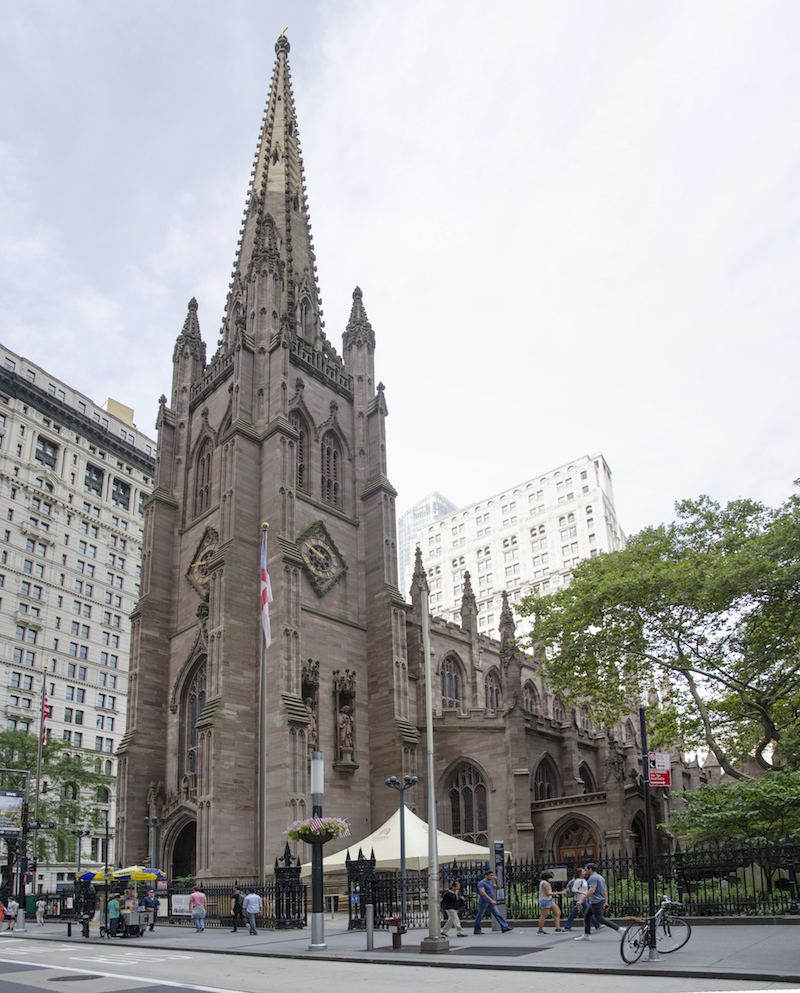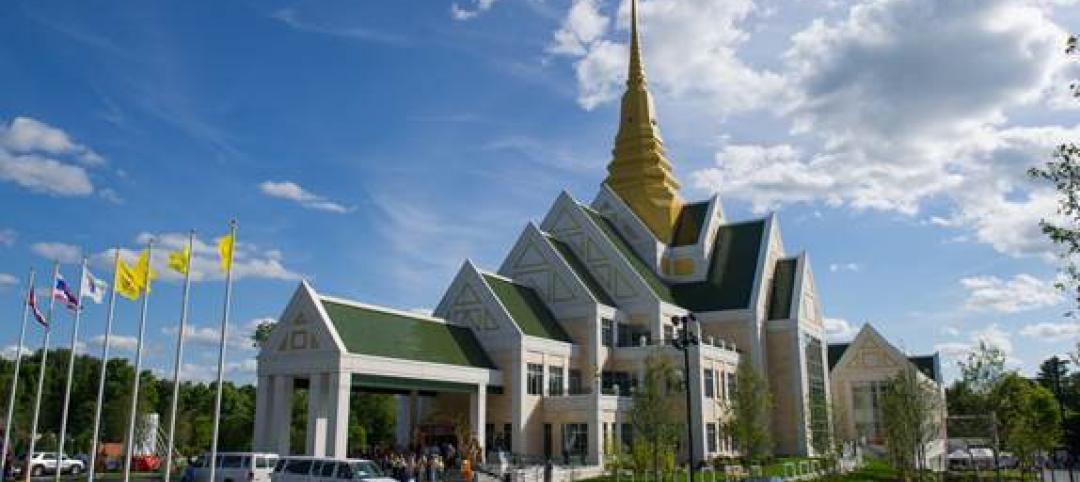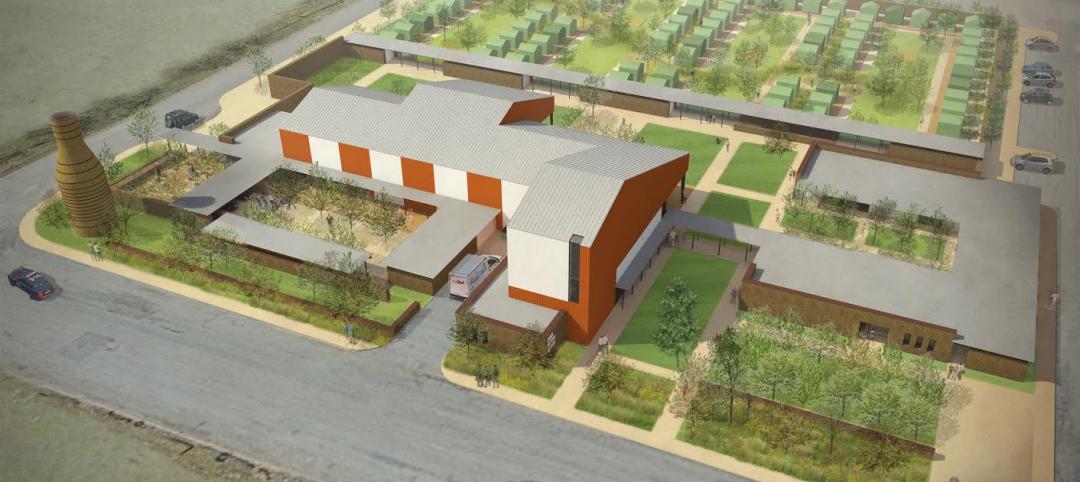Trinity Church Wall Street, which has served the Episcopal community in Lower Manhattan for 321 years, has initiated a $98.6 million “rejuvenation” that will close the building’s nave, the main body of the church, for approximately 20 months.
The architect on this project is Murphy, Burnham and Buttrick. Trinity Church had not identified the engineers or GC on this project at presstime. The rejuvenation will be financed entirely from the church’s endowment, one of the largest of any single religious institution in the country.
The 82,700-sf church is actually the third building from which Trinity Church has operated. The first, built in 1698, was destroyed by fire in 1776. The second, which opened in 1790, was torn down after being weakened by storms in the winter of 1838-39. The current church, whose construction was completed in 1846, at 281 feet stood as the tallest building in the U.S. until 1869.
The current building hasn’t had a significant renovation since 1946. “Underneath the skin, there are a lot of problems,” both structural and mechanical, says Rev. Phillip Jackson, Trinity’s Vicar. He adds that Trinity “is a little dark [inside]; we want to give back its light.”
The rejuvenation will return parts of the church to the original 1846 plan devised by Richard Upjohn, a British-born American architect. Its chancel, near the altar, will be restored to its original size, increasing capacity by 140 seats. The building’s interior walls and ceiling will be painted to reflect Upjohn’s stone design.

The remodeling will include making the church's altar movable to accommodate different events. The church's stained-glass windows will be repaired or restored. Image: Courtesy of Trinity Church
Other renovations and changes will include:
•Repairing and restoring the church’s stained-glass windows, and redesigning the clerestory windows so they match the church’s interior.
•Adding ramps to the North and South entrances, and modifying the East plaza, which would include removing steps in the Chapel of All Saints chancel, to make the entire church ADA-accessible.
•Separating the altar from its reredos (the ornamental screens behind the altar) and making the altar movable to accommodate different events.
•Installing a new lighting and sound system inside the church, and upgrading its exterior lighting.
•Renovating the choir room with acoustical panels to upgrade the practice and performance space.
•Adding a glass and steel canopy outside the church’s South side to provide processionals with protection from inclement weather.
•Installing gender-neutral bathrooms.
•Redesigned and refurbishing pews for comfort.
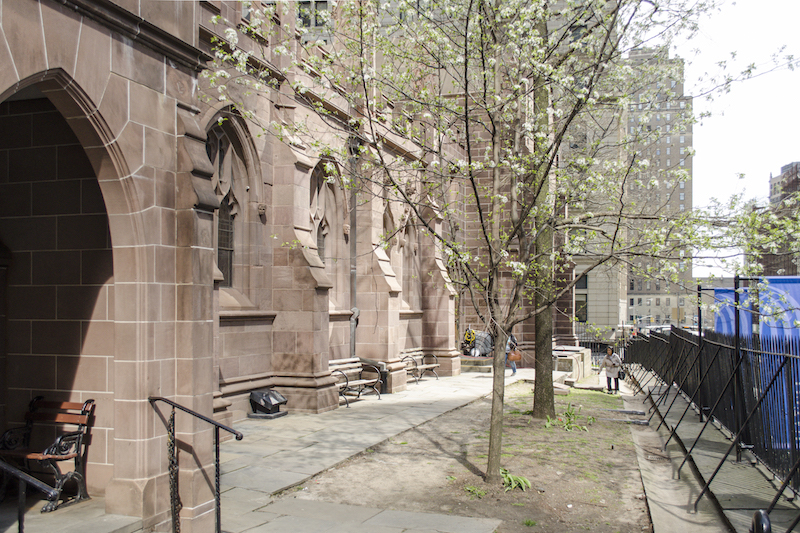
The top image shows what the church's West entrance looks like today. The bottom image shows how steps will be removed, and a plaza created, to make that entrance ADA-accessible. Images: Courtesy of Trinity Church
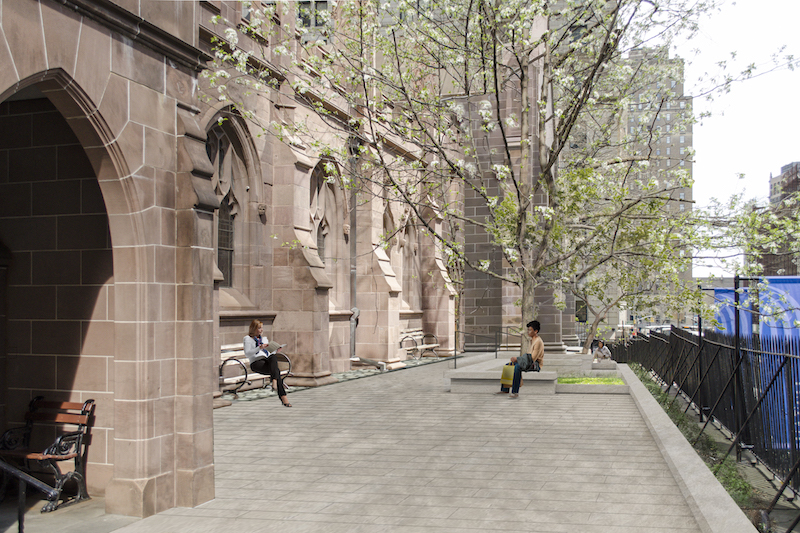
Trinity Church has a rich religious and political history. President George Washington, Alexander Hamilton and John Jay were among the government officials who worshipped there. When terrorists attacked New York City on Sept. 11, 2001, local residents took shelter in the church. Trinity, which is located near Zuccotti Park, also lent some moral support to protesters during the Occupy Wall Street movement in 2011, although declined to allow protesters to use its grounds.
During its renovation, which should be completed by Spring of 2020, Trinity Church will conduct many of its services and other functions from nearby St. Paul’s Chapel, the oldest building in New York, which itself recently underwent a restoration.
Related Stories
| Jun 17, 2014
Nation's largest Thai Buddhist temple opens near Boston
The $60 million facility built in honor of King Rama IX of Thailand is the largest Thai Buddhist temple outside of Thailand.
| Jun 12, 2014
Austrian university develops 'inflatable' concrete dome method
Constructing a concrete dome is a costly process, but this may change soon. A team from the Vienna University of Technology has developed a method that allows concrete domes to form with the use of air and steel cables instead of expensive, timber supporting structures.
| Jun 10, 2014
Gaudi’s famed cathedral on ice: Dutch students to construct 132-foot ice replica of Sagrada Familia
"Sagrada Familia in Ice" will be built with a mixture of wooden fibers and plain ice that is three times stronger than ice.
| May 29, 2014
7 cost-effective ways to make U.S. infrastructure more resilient
Moving critical elements to higher ground and designing for longer lifespans are just some of the ways cities and governments can make infrastructure more resilient to natural disasters and climate change, writes Richard Cavallaro, President of Skanska USA Civil.
| May 20, 2014
Kinetic Architecture: New book explores innovations in active façades
The book, co-authored by Arup's Russell Fortmeyer, illustrates the various ways architects, consultants, and engineers approach energy and comfort by manipulating air, water, and light through the layers of passive and active building envelope systems.
| May 19, 2014
What can architects learn from nature’s 3.8 billion years of experience?
In a new report, HOK and Biomimicry 3.8 partnered to study how lessons from the temperate broadleaf forest biome, which houses many of the world’s largest population centers, can inform the design of the built environment.
| May 13, 2014
19 industry groups team to promote resilient planning and building materials
The industry associations, with more than 700,000 members generating almost $1 trillion in GDP, have issued a joint statement on resilience, pushing design and building solutions for disaster mitigation.
| May 12, 2014
Lubbock, Texas, to build modern 'tent city' as shelter for homeless
On the five-acre site of a former cotton gin, the High Cotton program provides temporary shelter for Lubbock's homeless population. The facility needs to expand due to increased need, and new plans have been drawn up.
| May 11, 2014
Final call for entries: 2014 Giants 300 survey
BD+C's 2014 Giants 300 survey forms are due Wednesday, May 21. Survey results will be published in our July 2014 issue. The annual Giants 300 Report ranks the top AEC firms in commercial construction, by revenue.
| Apr 29, 2014
USGBC launches real-time green building data dashboard
The online data visualization resource highlights green building data for each state and Washington, D.C.


